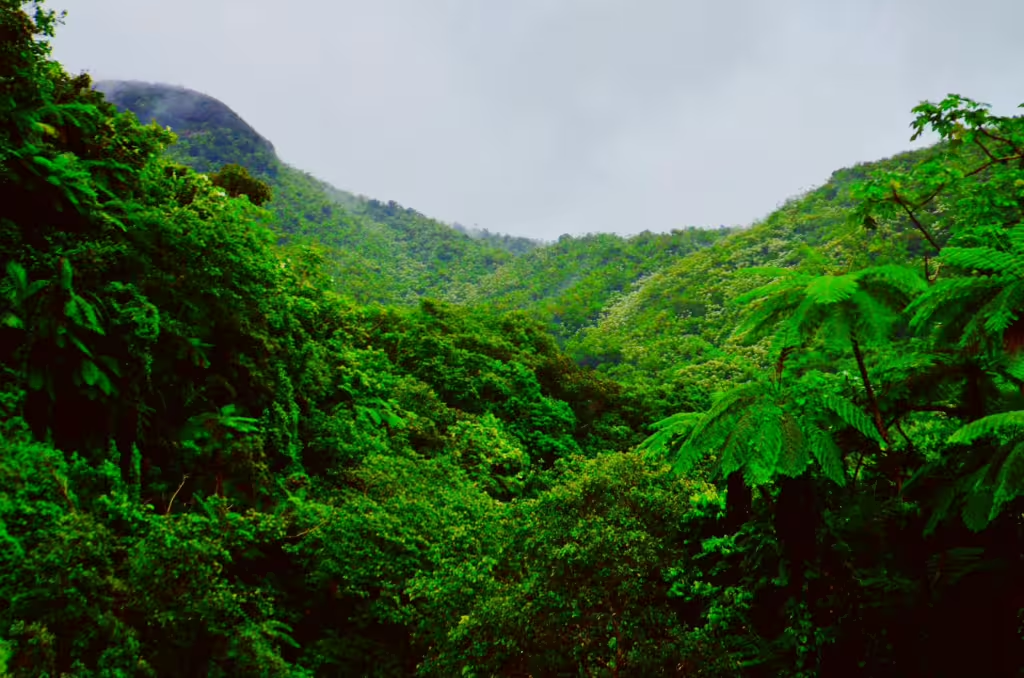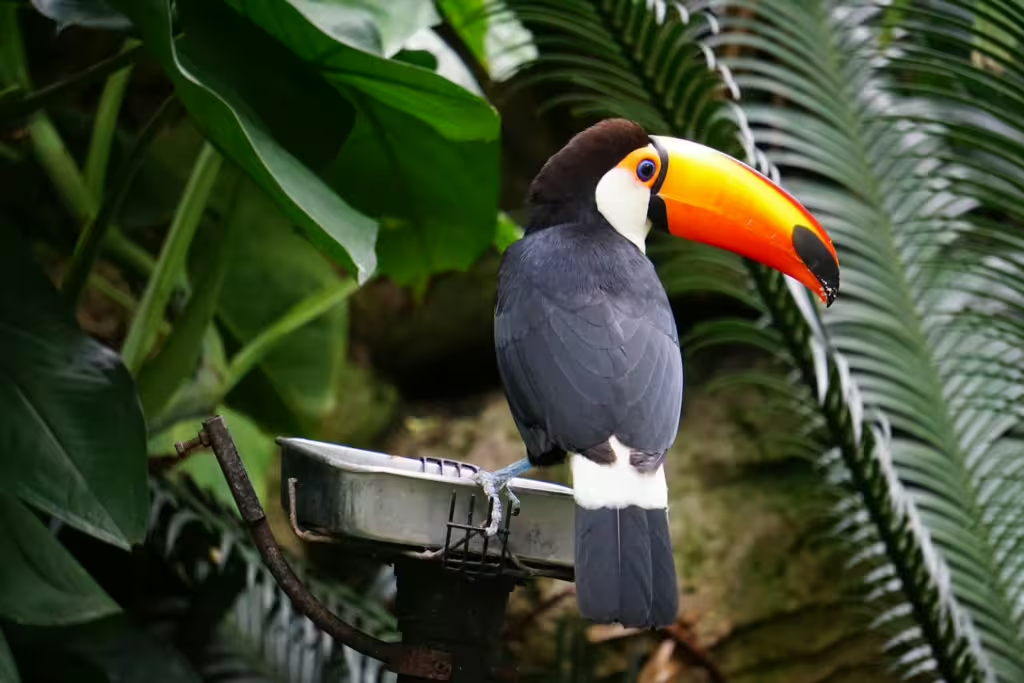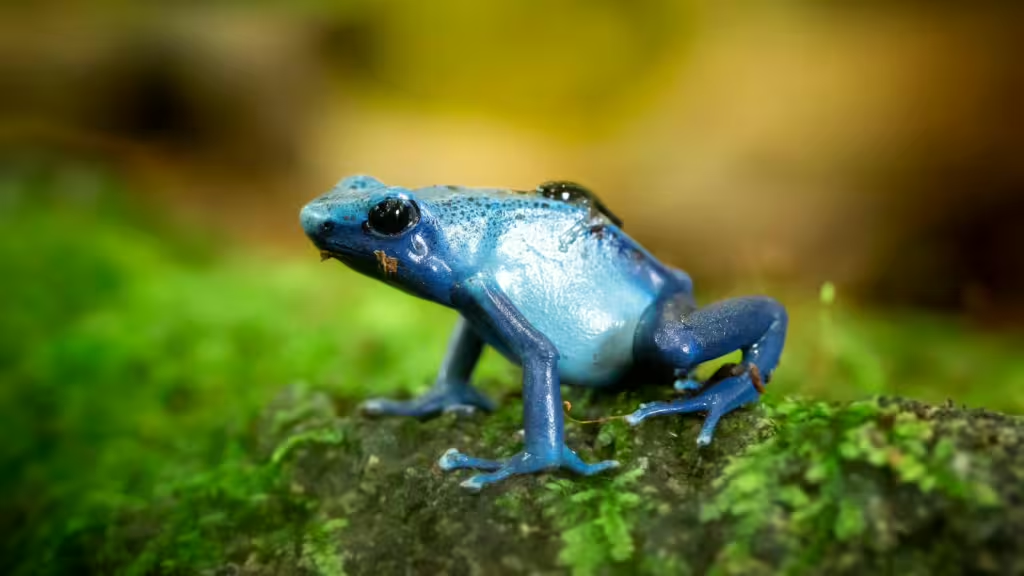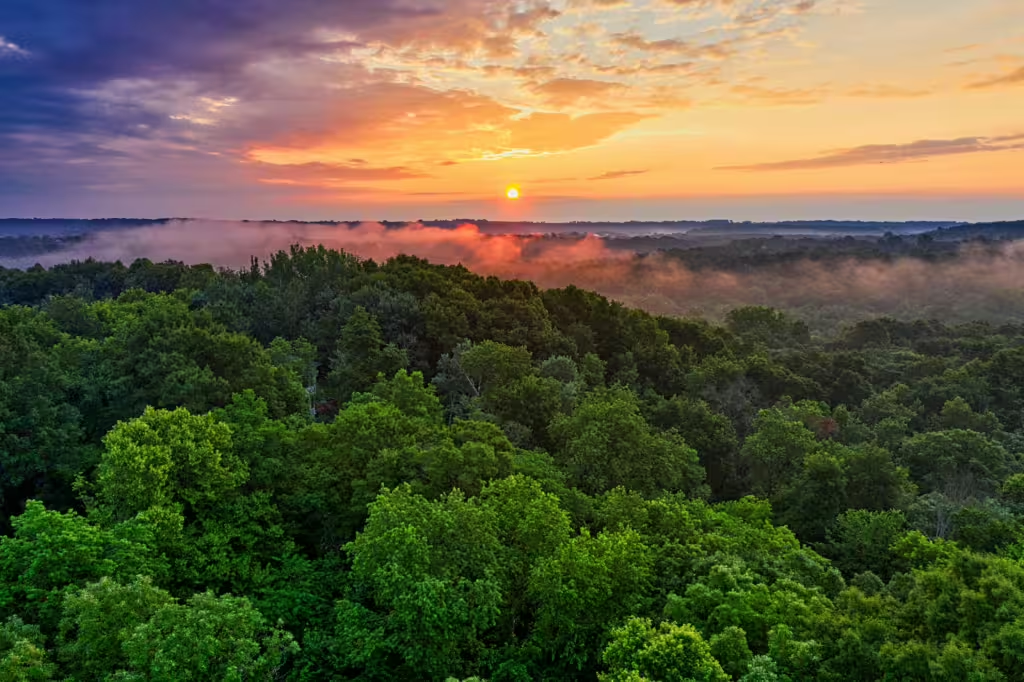You have probably hear rainforests being called the “lungs of the Earth” at some point in your life. This nickname is mostly due to the fact that rainforests are responsible for creating oxygen and reabsorbing carbon dioxide from the atmosphere, essentially enabling the rest of the oxygen-breathing population of the planet to respirate. Separate from their role as the planet’s lungs, rainforests also happen to be some of the most biologically diverse ecosystems on the planet.
When we speak of biodiversity, we tend to focus on the fauna over the flora. It’s not surprising, as unique and highly-charismatic animals like jaguars, toucans, and tree frogs seem positively poised to steal the spotlight. Yet, the plants that grow in these lush ecosystems are more important by far, than the beasts that traverse the forest paths and flit among the canopies. Rainforest plants form the foundation of life in these wild places, creating biodiversity hotspots that sustain each other species of plant and animal.
Whether we are discussing towering canopy trees or the tiny epiphytes that cling to their branches, rainforest flora finds ways to adapt and fill critical ecological roles within their home ecosystem. In this article, we will explore the biological purpose of rainforest plants. We will delve into their secrets, examine their unique adaptations, and find out how their very presence supports life in these incredible habitats.

The Layers of Life: Rainforest Plant Structure
We haven’t been over this before now, but rainforest plants are actually organized into several distinct layers, each contributing to the ecosystem’s complexity in different ways. These layers include:
Emergent Layer: This layer is home to towering giants like the kapok tree (Ceiba pentandra), which rises above the canopy and provides habitats for birds of prey and insects.
Canopy Layer: The second, mostly dense layer of interwoven tree crowns forms a “roof” of sorts. The canopy layer captures sunlight and produces vast amounts of oxygen. Trees like the Brazil nut tree (Bertholletia excelsa) thrive in this layer, supporting entire food webs, and humans who love healthy snacks.
Understory Layer: The understory layer is shaded by the canopy. The lifeforms in this layer are mostly shrubs and small trees best adapted to survive in low light conditions. Plants like cacao (Theobroma cacao), whose seeds is responsible for the modern wonder that is chocolate, thrive in the understory layer.
Forest Floor: Despite limited sunlight and much competition for rare, soil-borne nutrients, the forest floor is positively teeming with life. Decomposing plant matter in this layer fuels fungi, while low-growing plants like ferns flourish in this nutrient-rich layer.
As you can plainly see, each of the four layers described above has a distinct role to play, as well as a unique array of plantlife. These layered communities of plants demonstrate the rainforest’s intricate vertical stratification.
Keystone Trees: Anchors of Biodiversity
Just as many ecosystems have animals that represent keystone species, so too do some rainforests. It isn’t just elephants and tigers that affect their respective ecosystems in impactful ways, trees can also play the part of keystone species. What this means is that the presence of such species disproportionately supports a wide range of life within the jungle ecosystem. The Brazil nut tree, mentioned earlier as a tree that can be found in the canopy layer of the rainforest, depends on specific orchid bees for pollination. In turn, the tree provides nuts that sustain agoutis, parrots, and snacky humans. Fig trees (Ficus spp.) work in a similar way. They produce fruit year-round, making them vital food sources for birds, bats, and primates during lean seasons, but require other animals to pollinate them.
Keystone trees also shape the physical environment in a number of profound ways. The roots of these trees prevent soil erosion, and their massive trunks store vast amounts of atmospheric carbon. This is known as carbon sequestration and it plays a crucial role in mitigating the constant global threat that is climate change.
Epiphytes: Plants That Live in the Air
Epiphytes, otherwise known as “air plants,” are a hallmark of rainforest ecosystems. Though they might appear otherwise at first glance, these non-parasitic plants actually grow on other trees, deriving nutrients not from the trees themselves, but from air, rain, and decomposing debris. Orchids and bromeliads are classic examples of epiphytes and some species have been known to form miniature ecosystems in their water-holding leaves. This means that some bromeliads can host frogs, insects, and even small crustaceans within their “tanks.”
Epiphytes plant themselves where they do in order to get maximum sunlight exposure. By perching high in the canopy, these little beauties avoid any competition for light that might otherwise occur on the crowded and largely lightless forest floor. The epiphytes’ ability to thrive in such precarious conditions demonstrates the rainforest’s incredible resourcefulness.

Lianas and Vines: The Climbers That Connect
It wouldn’t be a rainforest if we didn’t talk about a few vines here and there. Vines and lianas are both examples of climbing plants that weave their wending way through the rainforest. Their purpose is to connect the forest floor to the uppermost layers of the canopy. Rattan palms and strangler figs are fine examples of these types of plants and both are vital for forest dynamics. What role does this connection play? Well, for one, vine plants provide pathways for animals like monkeys and sloths to traverse the forest with ease.
Strangler figs are particularly interesting. These plants have a fascinating life cycle. They begin their life as epiphytes and their roots grow downward from their perch in the canopy layer, eventually enveloping and outcompeting their host tree. Though seemingly destructive, the strangling figs create hollow tree-like structures that serve as habitats for countless other animals that call the rainforest home.
Carnivorous Plants: Masters of Nutrient Deprivation
Living as they do in the nutrient-poor soil of the rainforest, some plants have had to evolve new ways to get the vital, life-giving compounds they need to survive. Many have followed the path of the venus fly trap and other such carnivorous veggies and adapted in such a way that allows them to consume insects and other small organisms for nutrients. Plants like these can often be found areas with acidic, nutrient-deficient soils, such as rainforest bogs. By supplementing their usual “diets” with animal protein, they have found a way to overcome the extant challenges of their environment.
Carnivorous rainforest species such as pitcher plants (Nepenthes spp.) and sundews (Drosera spp.) capture prey using ingenious traps. Pitcher plants are most unusual, as they have modified leaves that form slippery, liquid-filled containers where insects drown and are slowly digested thereafter.
Medicinal Marvels: Nature’s Pharmacy
Though many are likely lost to time thanks to the unending trend of rampant deforestation that has heralded the modern age, rainforests have always been veritable treasure troves of medicinal plant-derived compounds. The rosy periwinkle (Catharanthus roseus), native to Madagascar’s rainforests, is one such example. Over the years, the periwinkle has provided scientists with alkaloid compounds that have proven to be crucial for treating deadly diseases like leukemia and Hodgkin’s lymphoma. Similarly, the bark of the cinchona tree (Cinchona spp.) contains quinine, a key ingredient in the medicinal treatment of malaria.
Ethnobotanical knowledge, which is most often passed down through generations of Indigenous peoples, has guided scientists in their pursuit of these miraculous discoveries for untold decades. But the time of such discoveries is drawing to a close. Deforestation continues to thrive, unhindered by conservationists and government sanctions. As a result, this destructive process continues to threaten both plant species and the traditional knowledge systems that understand their boundless potential.
The Role of Flowers and Fruits in Biodiversity
Rainforest plants are well-known for their beauty. Many of the native species that live in these areas can produce a dazzling array of flowers and fruits, attracting pollinators and seed dispersers of all types. Orchids, with their intricate flowers, are quite specialized, relying on specific pollinators in order to propagate and often forming co-dependent relationships with those pollinators. Meanwhile, the stinking corpse lily (Rafflesia arnoldii), which happens to be one of the world’s largest flowers, mimics the scent of rotting flesh in order to attract its preferred pollination partner; carrion flies.
At the same time, fruits like durians, figs, and mangosteens represent critical food sources for animals and humans that live in the rainforest. Animals such as fruit bats and monkeys consume the fruit, while the resultant excrement disperses the leftover seeds far and wide, ensuring plant regeneration and forest continuity far beyond the location of the parent plant.
Mycorrhizal Networks: The Underground Web
They call it the “Wood Wide Web” but there is nothing technical about the underground network of plants and fungi that make up mycorrhizal networks in rainforest ecosystems all over the world. Thus far, we have only really touched on the rainforest life that is visible or else, very far above the ground, but an intricate network of fungi and plant roots lies hidden well below the soil. In these networks, mycorrhizal fungi form symbiotic relationships with rooting plants, enhancing nutrient absorption in exchange for sugars and energy. This underground web connects the plants to the fungi and to other plants, enabling nutrient sharing and in some cases, communication.
How does a tree or a fungus communicate with another of its species or even outside its species, you may ask? It’s actually quite fascinating. Let’s say that a tree is attacked by pests one day, it can use the fungal network to signal nearby plants to bolster their defenses. Such interconnectedness highlights the rainforest’s remarkable resilience and cooperation, even in place where one might have believed communication to be impossible.
Rainforest Plant Adaptations to Extreme Conditions
Rainforest plants may be resilient but they face daily challenges that test their mettle like any other living thing. Heavy rainfall, intense competition for light, and nutrient-poor soils are all continuous threats to their survival, and none of these are even caused by human beings. The adaptations rainforest plants to deal with these issues include:
Drip Tips: Many leaves, such as those of rubber trees (Hevea brasiliensis), have pointed tips that allow the plant to shed excess water and prevent fungal growth during times of heavy rainfall.
Buttress Roots: Large trees like kapoks have wide, flared roots that provide stability in shallow, sometimes unstable soils.
Shade Tolerance: Understory plants like ferns have developed adaptations that allow them to photosynthesize efficiently, even in low-light conditions.
Rainforest Plants and Climate Regulation
As we have seen, rainforest plants play a pivotal role in regulating Earth’s ever-changing climate. Through photosynthesis, the trees and plants within these once-vast ecosystems absorb immense amounts of carbon dioxide, acting as carbon sinks. It is estimated that the Amazon rainforest alone stores over 120 billion metric tons of carbon. This is a massive help in mitigating global warming, a problem that we, ourselves are only exacerbating with each passing year.
Believe it or not, rainforest plants can also influence weather patterns in ways that go beyond the storage of carbon. They accomplish this by releasing water vapor into the atmosphere, which then drives local and regional rainfall. This rainwater cycle sustains both the forest and surrounding agricultural regions, emphasizing the global importance of rainforest conservation for humans and wildlife alike.
The Threat of Deforestation
Despite their ecological significance, the threat of deforestation looms large. Our planet’s rainforests are disappearing at an alarming rate due to logging, agriculture, and urbanization; and recent ecological initiatives have done little to stem this loss of plant life. The loss of crucial plant species disrupts ecosystems, leading to cascading effects on wildlife and local communities.
Many keystone trees, epiphytes, and medicinal plants can be counted among the casualties, threatening biodiversity in every corner of the world. Though there are efforts in place meant to protect rainforests, the adoption of sustainable logging practices, reforestation, and initiatives to empower Indigenous communities are slow to gain momentum. Nevertheless, these are the only ways we currently know of to help save these ecosystems.

True Investigator Says…
As you can see, rainforest plants are not merely background features that decorate the homes of brilliant and popular rainforest critters; they are the very architects of biodiversity hotspots all over the world. From towering trees to the tiny fungi in the soil below, these plants are vital in shaping ecosystems, sustaining wildlife, and providing essential resources for humanity. We must preserve them at all costs, even if doing so seems difficult, for without them, our own existence on this planet would become extremely limited; and nobody wants to end up as a footnote in the history of the planet.
Discover more from TrueInvestigator
Subscribe to get the latest posts sent to your email.


